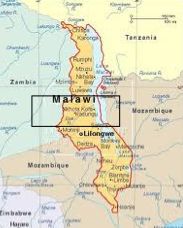Mtombodzi School Completed on October 23, 2011!
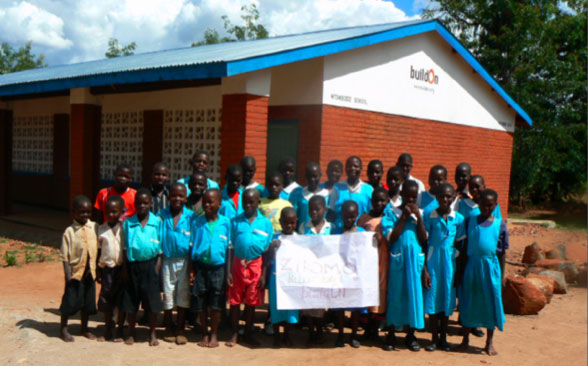
Mtombodzi's New School
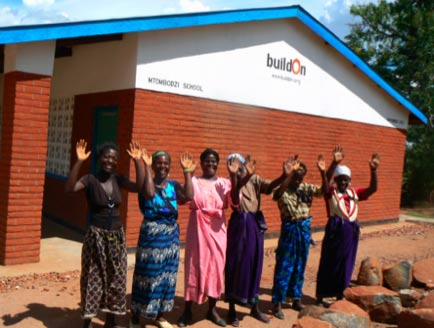
Local women outside the brand new school
One of the women in the photo above is Magdalena Phiri, Vice-Chairperson of the Community Leadership Committee. She was born in the neighboring country of Zambia where her father was working. In Zambia she attended primary school up to grade 4, when she returned with her family to her father’s home village of Mtombodzi. Magdalena had always dreamed of becoming a teacher, and she was devastated when she found out that there was no school in her village. The closest school was over 20 km away. Magdalena is determined to make sure no other little girl is forced to give up her dream in this way. She was at the worksite in Mtombodzi almost every day for ten weeks and was easily recognized as one of the hardest workers there. Now she hopes that one of her children may one day become a teacher, or even a nurse.
The new school in Mtombodzi has 2 classrooms and 2 latrines. Students began attending classes in this school block in November 2011. A Community Education Program for illiterate adults will begin in Mtombodzi in April 2012. The CEP teaches fundamental numeracy and literacy skills, as well as new knowledge about nutrition, family planning and income generating activities. The ability to read, write and do basic math allows individuals in the community to improve health conditions, develop more efficient farming techniques, and gain a stronger voice in society. buildOn will select two education villagers from Mtombodzi to attend a 30-day facilitator training program, where they will receive intensive instruction on how to teach adults to read and write. Facilitators receive a monthly stipend to teach 50-75 adults six nights per week, two hours a night for six months each year over a three year period.
The new school in Mtombodzi has 2 classrooms and 2 latrines. Students began attending classes in this school block in November 2011. A Community Education Program for illiterate adults will begin in Mtombodzi in April 2012. The CEP teaches fundamental numeracy and literacy skills, as well as new knowledge about nutrition, family planning and income generating activities. The ability to read, write and do basic math allows individuals in the community to improve health conditions, develop more efficient farming techniques, and gain a stronger voice in society. buildOn will select two education villagers from Mtombodzi to attend a 30-day facilitator training program, where they will receive intensive instruction on how to teach adults to read and write. Facilitators receive a monthly stipend to teach 50-75 adults six nights per week, two hours a night for six months each year over a three year period.

The picture to the right shows the school's teachers proudly showing off one of their new classrooms.
Mtombodzi Community Profile
Mtombodzi is part of Kasungu district, in the central region of Malawi, and was founded in the early 1940s by Village Headman Katukula. There are 1,771 individuals and 154 families living in Mtombodzi today. The majority of these people belong to the Chewa ethnic group. The current leader of the community is Senior Chief Katukula, who oversees the leadership of 7 Group Village Headmen and the many chiefs under them.
The weather in Mtombodzi is typical of Malawi’s central region, with a warm dry season from August to November and a cooler rainy season from December to April. The people of Mtombodzi are subsistence farmers who grow tobacco as their main cash crop and maize as a staple food crop. Some also raise goats, cattle, sheep or pigs. The nearby Mtombodzi River supplies the community with water for domestic chores and animals.
The weather in Mtombodzi is typical of Malawi’s central region, with a warm dry season from August to November and a cooler rainy season from December to April. The people of Mtombodzi are subsistence farmers who grow tobacco as their main cash crop and maize as a staple food crop. Some also raise goats, cattle, sheep or pigs. The nearby Mtombodzi River supplies the community with water for domestic chores and animals.
Old School Conditions

Mtombodzi students in front of some temporary classrooms
There are currently only two permanent classrooms serving 520 students (275 girls and 245 boys) in Mtombodzi. These children are enrolled in grades 1- 8 and study with six teachers. One of these teachers is from the community and the other five have been assigned to Mtombodzi by the government. Formal education has been available in Mtombodzi since 1998, but many classes are still taught outdoors or in temporary structures due to the lack of infrastructure and the high student enrollment.
Some students who live in Mtombodzi walk about 4km each day to study at Nkhono School, where there is space for them to attend classes indoors. Those who stay in Mtombodzi are often forced to skip school during rainy or extremely hot weather.
Some students who live in Mtombodzi walk about 4km each day to study at Nkhono School, where there is space for them to attend classes indoors. Those who stay in Mtombodzi are often forced to skip school during rainy or extremely hot weather.
Mtombodzi School Project
The project will broke ground in August 2011 and will be completed in November 2011. The new school block in Mtombodzi will have 2 classrooms with a corrugated tin roof and a poured concrete floor. Two latrines will also be built near the school. The entire project will take approximately 12 weeks to complete. The people of Mtombodzi gathered all the local materials needed for the project and molded more than 50,000 clay bricks in advance of starting the construction.
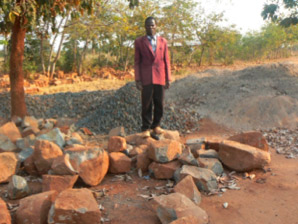
Village Headman Tsekani
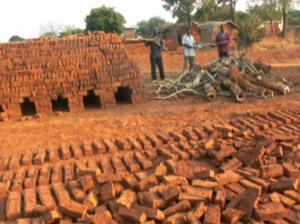
Firing of molded clay bricks
The responsibilities of buildOn and the community to the project were discussed during several mass meetings over the past few months, and were reviewed again during the covenant signing ceremony as outlined below:
Community Contribution
• Unskilled labor: 30 workers (15 women and 15 men) per day, six days per week
• Commitment to educating girls and boys equally
• The land on which the school is built
• High quality local materials: sand, gravel, water & rocks
• Volunteer management committee made up of 12 villagers (six women, six men)
• Lodging for buildOn Field Coordinator and skilled laborers in local houses
• Basic construction tools (picks, Community members fire molded clay bricks buckets, etc.) when available
buildOn Contribution
• Architecture and engineering
• Construction materials (excluding local materials) for school and latrine
• Skilled labor and plans needed to build the school
• Project management (buildOn coordinators)
• Instruction in basic construction techniques
Community Contribution
• Unskilled labor: 30 workers (15 women and 15 men) per day, six days per week
• Commitment to educating girls and boys equally
• The land on which the school is built
• High quality local materials: sand, gravel, water & rocks
• Volunteer management committee made up of 12 villagers (six women, six men)
• Lodging for buildOn Field Coordinator and skilled laborers in local houses
• Basic construction tools (picks, Community members fire molded clay bricks buckets, etc.) when available
buildOn Contribution
• Architecture and engineering
• Construction materials (excluding local materials) for school and latrine
• Skilled labor and plans needed to build the school
• Project management (buildOn coordinators)
• Instruction in basic construction techniques
